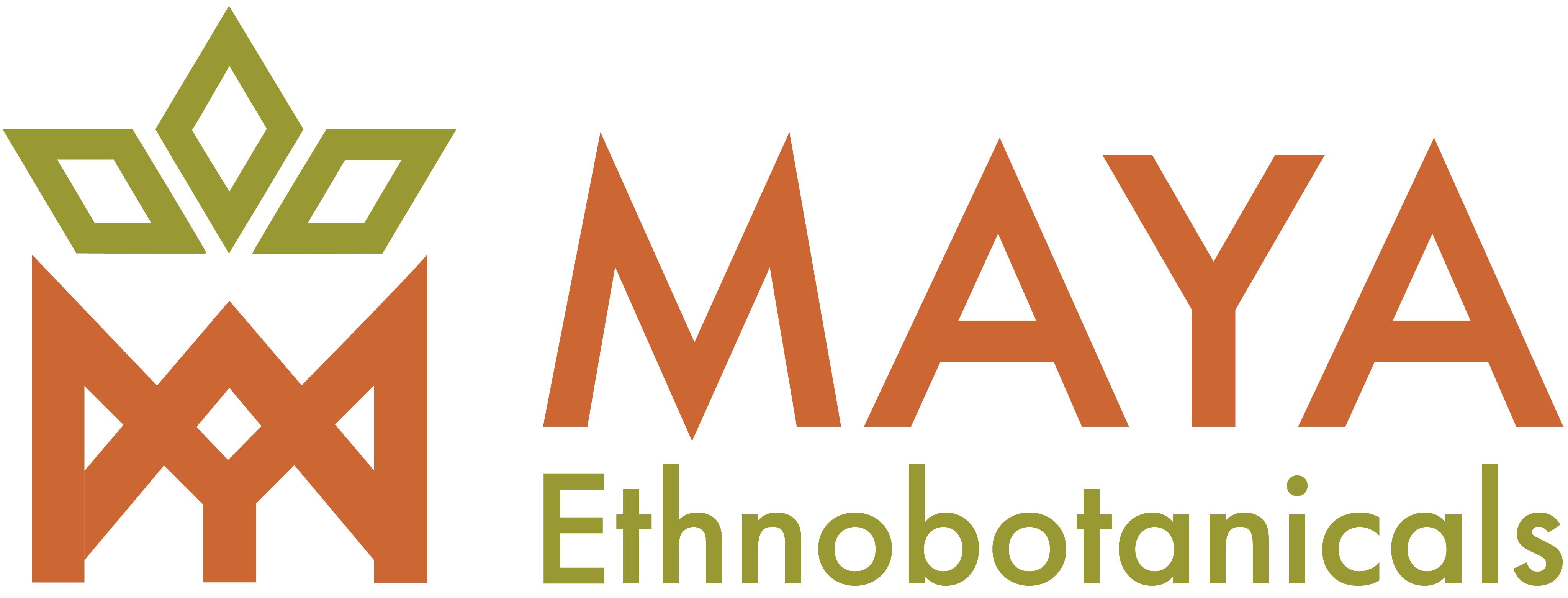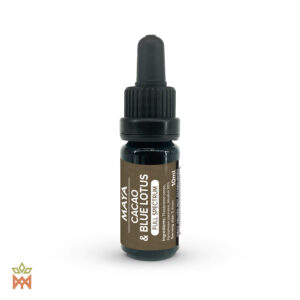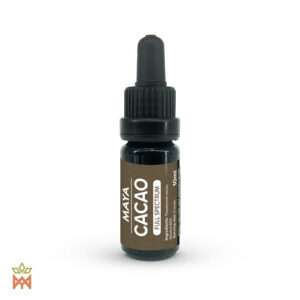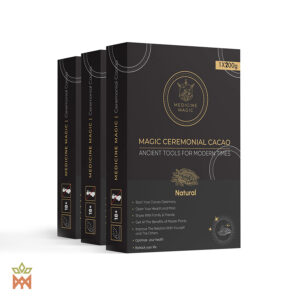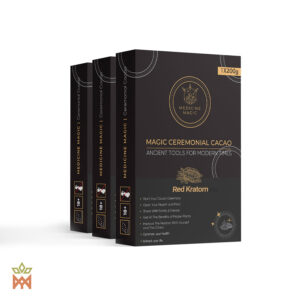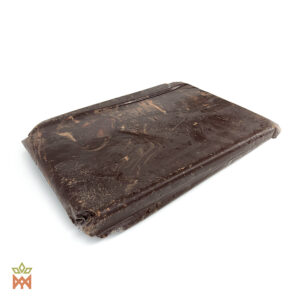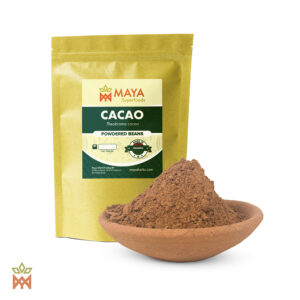Cacao: The Divine Gift from the Amazon Rainforest
Introduction to Natural Cacao: Cacao, known scientifically as Theobroma cacao, is a small evergreen tree native to the deep tropical regions of the Americas. Revered as a sacred plant for centuries, cacao holds a rich history and cultural significance, particularly within Mesoamerican civilizations. This versatile plant is not only the source of chocolate but also an important element in traditional medicine, ceremonies, and spiritual practices. At Maya Herbs, we offer a wide selection of high-quality cacao products, bringing the ancient wisdom and benefits of this remarkable plant to you.
Botanical Information and Native Origins
Theobroma cacao: The cacao tree, Theobroma cacao, belongs to the Malvaceae family. It thrives in the humid, shaded environments of the tropical rainforests, predominantly in the Amazon basin, which spans parts of modern-day Peru, Colombia, Brazil, and Ecuador. The tree grows to a height of 4-8 meters, with large, glossy leaves and small, pinkish flowers that bloom directly on the trunk and branches, a phenomenon known as cauliflory.
Cacao Pods and Beans: Cacao trees produce large, ribbed pods, each containing 20-60 seeds, commonly referred to as cacao beans. These beans are surrounded by a sweet, mucilaginous pulp, which is edible and often enjoyed fresh. The beans themselves undergo fermentation, drying, roasting, and grinding to produce various cacao products.
History and Cultural Significance
Origins and Domestication: The domestication of cacao dates back over 5,000 years. Archaeological evidence suggests that the Olmecs, one of the earliest Mesoamerican civilizations, were the first to cultivate cacao. From the Olmecs, cacao culture spread to the Maya and Aztec civilizations, where it gained immense importance.
Etymology of the Word "Cacao"
The word "cacao" has deep historical and cultural roots, tracing back to ancient Mesoamerican civilizations. In the Mayan language, the term for cacao is "kakaw" (or "cacau" in some dialects), which holds significant meaning and reflects the cultural importance of this plant.
Origins and Spread of the Term: The etymology of "cacao" begins with the Olmecs, one of the earliest civilizations in Mesoamerica. The Olmecs, who inhabited present-day Mexico around 1500 BCE to 400 BCE, were among the first to cultivate and use cacao. They passed on their knowledge and practices to subsequent civilizations, including the Maya and Aztecs. The term "kakaw" is believed to have originated from the Olmec language and was later adopted and adapted by the Maya.
Meaning of "Kakaw" in the Mayan Language: In the Mayan language, "kakaw" (spelled in modern orthography) refers to the cacao tree, its beans, and the products derived from them. The word itself embodies the cultural and economic significance of cacao in Mayan society. Cacao was not just a food item; it was a symbol of wealth, a unit of currency, a component of rituals, and a gift to the gods. The deep reverence for cacao is encapsulated in the very word "kakaw," indicating its integral role in Mayan life.
Symbolism and Usage in Mayan Culture
Ritual and Ceremonial Significance: In Mayan culture, cacao was a sacred plant used in various rituals and ceremonies. It was often associated with fertility, abundance, and life. The consumption of cacao during religious ceremonies was a way to commune with the divine and to honor the gods. The Mayans believed that cacao was a gift from the gods, particularly the god Kukulkan (also known as Quetzalcoatl in Aztec culture), who was said to have brought cacao to the people.
Economic Value: Cacao beans were used as a form of currency in Mayan society. They were traded for goods and services and even used to pay tribute to rulers and priests. The value of cacao beans was such that they became a standard measure of wealth and economic exchange.
Culinary Use: The Mayans prepared a frothy, bitter drink from cacao beans, which was often flavored with spices such as chili peppers and vanilla. This drink, known as "chocolhaa" (meaning "bitter water"), was consumed during feasts and ceremonies. The preparation of cacao drinks was an elaborate process that involved roasting, grinding, and mixing the beans with water and other ingredients to create a beverage that was both nutritious and invigorating.
Influence on Other Languages and Cultures
The term "kakaw" was adopted by the Aztecs, who referred to it as "cacahuatl." The Spanish conquerors who arrived in the Americas in the 16th century encountered the widespread use of cacao and its cultural significance. They adopted the term "cacao" into Spanish, which then spread to other European languages. The adaptation and spread of the term across different cultures and languages underscore the profound impact that cacao had on the world.
Ceremonial and Traditional Use in Mesoamerica
Mayan and Aztec Ceremonies: For the Maya and Aztecs, cacao was more than just a food; it was a divine gift and a vital part of their cosmology. Cacao was used in various ceremonial contexts, from royal feasts to religious rituals. The Maya prepared a frothy beverage by mixing ground cacao beans with water, chili peppers, and spices, known as "xocolatl," believed to be an elixir of the gods.
The Aztecs also highly valued cacao, using it as currency and in sacred ceremonies. The Aztec emperor Montezuma was known to consume large quantities of cacao, considering it a source of wisdom and vitality.
Spiritual and Medicinal Uses: Cacao was believed to have profound healing properties. It was used in traditional medicine to treat various ailments, from digestive issues to heart problems. The spiritual significance of cacao was intertwined with its medicinal uses, as it was thought to open the heart and enhance spiritual awareness.
Ceremonial Cacao: Traditional and Modern Forms
Traditional Ceremonial Use: Traditional cacao ceremonies are still practiced today, especially in regions like Guatemala and southern Mexico. These ceremonies often involve the preparation of a cacao drink made from raw cacao paste, water, and spices. Participants consume the drink in a communal setting, often accompanied by chanting, meditation, or other spiritual practices. The intention is to connect with the spirit of cacao, open the heart, and facilitate emotional and spiritual healing.
Modern Ceremonial Use: In recent years, there has been a resurgence of interest in cacao ceremonies outside of its traditional geographic and cultural context. Modern cacao ceremonies can be found globally, from yoga studios in Europe to wellness retreats in the United States. These contemporary ceremonies blend traditional elements with new age spirituality, often incorporating guided meditation, breathwork, and sound healing.
The Sacred Feminine and Cacao
Cacao and the Sacred Feminine: Cacao is often associated with the sacred feminine, a concept that emphasizes nurturing, creativity, intuition, and emotional depth. The nurturing aspects of cacao—its ability to soothe, heal, and open the heart—resonate deeply with the principles of the sacred feminine. This association is reflected in the ceremonial use of cacao to facilitate emotional release, foster community, and deepen spiritual connection.
Buy Cacao Products at Maya Herbs
The word "cacao" (or "kakaw" in Mayan) is more than just a name for a plant; it is a testament to the rich cultural heritage of Mesoamerican civilizations. It reflects the economic, social, and spiritual significance of cacao in ancient times. Understanding the etymology and meaning of "kakaw" provides deeper insight into the reverence and importance that cacao held for the Maya and other Mesoamerican cultures. At Maya Herbs, we honor this legacy by offering a wide selection of cacao products that celebrate the ancient traditions and benefits of this remarkable plant.
Our Selection of Cacao Products: At Maya Herbs, we are committed to offering the highest quality cacao products, sourced ethically and sustainably from indigenous farmers who continue the tradition of cultivating cacao with reverence and care. Our selection includes:
- Raw Cacao Beans: Whole, unprocessed beans that retain all the natural nutrients and flavors of cacao.
- Cacao Nibs: Small pieces of crushed cacao beans, perfect for adding to smoothies, desserts, or trail mixes.
- Cacao Powder: Finely ground powder made from roasted cacao beans, ideal for baking or making hot chocolate.
- Ceremonial Cacao Paste: Pure, unrefined cacao paste, perfect for preparing traditional ceremonial drinks.
Conclusion
Cacao is much more than a delicious treat; it is a plant with a profound history, rich cultural significance, and powerful healing properties. From its origins in the Amazon rainforest to its revered status among the ancient Mesoamerican civilizations, cacao has been cherished as a sacred gift. Whether you are interested in exploring its traditional ceremonial uses, experiencing its health benefits, or simply enjoying its rich, complex flavor, cacao offers a unique and enriching experience. At Maya Herbs, we invite you to explore our wide selection of cacao products and discover the magic of this extraordinary plant.
